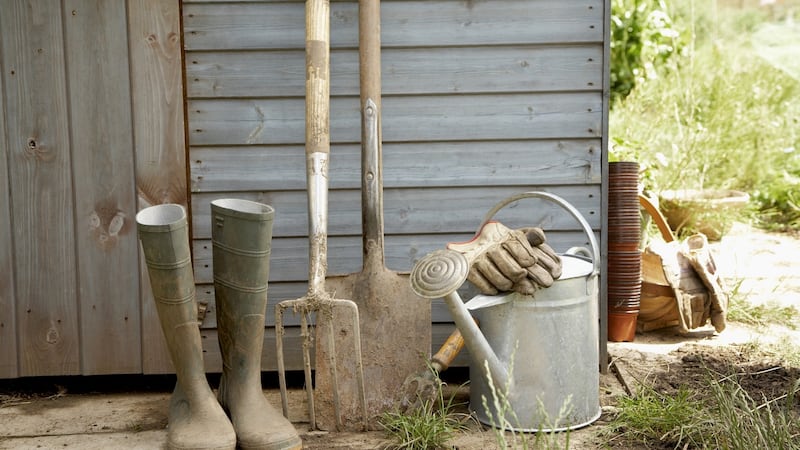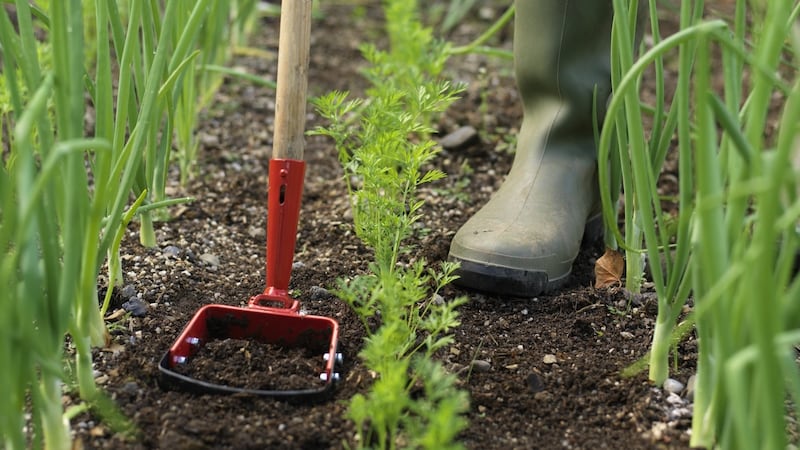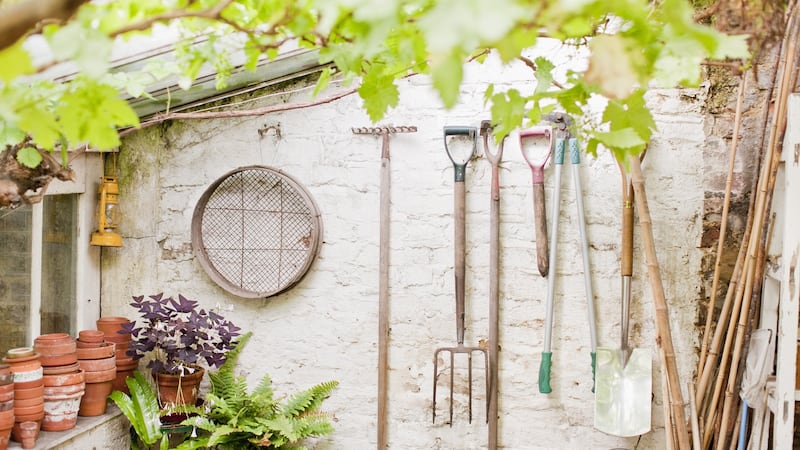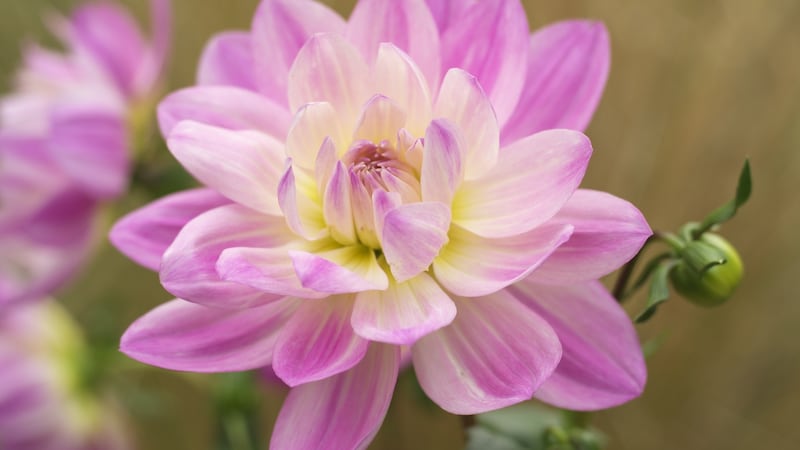Ask any good gardener to name their favourite garden tools and, along with a shortlist of their most trusted brands, you’re likely to receive a loving if lengthy discourse on the importance of them being lightweight, robust, long-lasting, ergonomic and beautifully engineered.
Really great tools, they’ll tell you with a fervent gleam in their eyes borne of years of experience, maketh the gardener, and they’re absolutely right.
Razor-sharp, high quality, hand-forged carbon steel blades, for example, will make the crucial difference to the ease with which your secateurs cuts through tough, woody branches.
A handle fashioned from lightweight but strong and shock-absorbent ash wood will allow you to use that shovel, spade, fork or rake for far longer without your back, arms and shoulders beginning to ache. Choose the right hoe and it will almost effortlessly slice through weedy soil to quickly create a fine, clean tilth unlike the many lesser models that make the process both laborious and time-consuming.
This is, of course, one of those times of the year when these garden tools are being put to especially hard use. Flower, fruit and and vegetable beds need to be prepped, paths hoed and raked, seed potatoes and the very last of the bare-root plants planted snugly in the ground, stubborn weeds carefully excavated, late-winter flowering shrubs pruned, hardy annuals sown.
All of which are great reasons to have a peek at the following shortlist of tools, which I promise you will soon make those gardening chores seem a whole lot easier.
It might sound like something out of a bad sci-fi movie but the Japanese Hori Hori knife is one of the most versatile, multi-purpose of garden hand-tools out there with a wide, sharp steel blade that narrows to a point and is ideal for transplanting, weeding, cutting or dividing.
Also known as a 'soil knife', this weeding knife cum trowel is still surprisingly hard to find for sale in Irish garden centres but Howbert & Mays stock the great Niwaki model (howbertandmays.ie, €32), which has a 7-inch steel blade and a beech-wood handle.
After a tip-off from fellow professional gardeners during his recent sojourn in the States, Colm O'Driscoll, head gardener of Airfield gardens in Dundrum, Co Dublin, also swears by the US-made Lesche version (which the company itself refers to as the Lesche digging tool), which is handmade with a serrated steel blade and an off-centre, rubber-grip handle ($36.94, amazon.com).
Increasingly popular
The go-to brand of pruners for many is the Swiss-made Felco (buy them from mrmiddleton.com and they come with the promise of a free lifetime service carried out by Felco specialists).
The extensive range includes traditional secateurs (both left-handed and right-handed models) such as the classic model known as Felco 2 as well as newer, lighter, smaller ‘snips’ such as the Felco 310, which is ideal for picking cut-flowers.
But a handful of Japanese brands are becomingly increasingly popular with discerning gardeners for their hand-forged, beautifully balanced, ultra-sharp, precision blades including Suwada, Hidehisa, Toshibo and Niwaki (see suwadalondon.co.uk and niwaki.com).

Take care when using these laser-sharp tools; I’ve come across more than one gardener who’s inadvertently injured themselves as a result of just a moment’s carelessness.
Even "no-dig" gardeners have to dig sometimes, whether it's to sow potatoes, plant bulbs or to get container-grown specimen plants in the ground, which is why a garden spade is a must-have tool. These come in many different sizes and with different handles including some that are T-shaped and Y-shaped, but all have a rectangular-shaped head. (Or at least they do if you live in Ireland; confusingly the term' spade' is sometimes used in the UK and the US to refer to what we Irish gardeners call a shovel, which has a larger, shield-shaped blade).
The best spades are made of hand-forged steel and have narrow footplates at the top of the blade to make digging easier and help protect your feet. Long-established Dutch firm Sneeboer make an excellent range including lighter models with narrower, shorter blades for more petite gardeners (see fruithillfarm.com and sneeboer.com), all of which will last you a lifetime.
Cork-based Fruithill Farm also stock the perfect garden fork with a forged steel head made by the long-established German firm SHW, which is available in two sizes (240 x 160 mm for its smaller border fork or 280x190mm for the larger model, available to order with either an ash T-handle or a rounded handle, from €35.90) as well as (another personal favourite) an adjustable "leaf rake" by the same firm that's perfect for collecting leaves or creating a fine, crumbly tilth for seed sowing.
Oscillating hoe
I also wouldn’t be without my oscillating hoe, which has a pivoting double-edged blade that cuts on both the forward and backward stroke and makes short and easy work of weedy beds and paths.
Also known as the stirrup hoe, you'll find these for sale in the better garden centres as well as via trusted online Irish suppliers including dunmorecountryschool.ie, quickcrop.ie and fruithillfarm.com. While it's available to buy in different widths, my own preference is for the narrower head (14/15cm).

Regular liquid feeds of seaweed, nettle and comfrey are one of the mainstays of organic gardening, so it makes a huge amount of sense to invest in a proper knapsack/pressure sprayer.
Agri Direct (agridirect.ie) stock a great range, starting from €14.99 for the 5-litre Kingfisher pressure sprayer while Fruithill Farm stock the sturdy 15L Birschmeier back-Pack sprayer (€159.49).

Last but not least, treat yourself to a custom-made leather tool belt from the small family-run US firm Wheeler Munroe, whose belts are things of beauty as well as lifesavers for busy multi-tasking gardeners.
Hand-made from chocolate-brown, oil-tanned leather with rust-proof brass fittings, multiple pockets for your pruners, mobile phone and pencils and even a protective sheath for that Hor Hori knife, these are designed to last a lifetime (from €161.29 plus $23.78 shipping to Ireland, etsy.com/shop/WheelerMunroe).
This Week in the Garden
St Patrick’s Day traditionally marks the beginning of the potato-planting season in Ireland, kicking off with what are known as the ‘first earlies’ followed by the ‘second-earlies’ and maincrop varieties which should be planted in April.
Along with full sun, potatoes like a very fertile, moisture-retentive but free draining soil, so before planting prepare the ground well by adding a generous mulch of homemade garden compost or well-rotted manure. Don’t worry about digging this in, as it will be naturally incorporated into the soil while planting the seed potatoes.
Early varieties of potato should be planted 25cm apart and with 30cm between rows. Recommended varieties of first-earlies include "Casablanca", "Colleen" and "Red Duke of York".
March is an exceptionally busy month in the gardening year as regards sowing seed of hardy annuals and (towards the end of the month) half-hardy annual flowering plants under cover for transplanting outdoors in late spring/early summer.
Raising these short-lived but exceptionally floriferous plants from seed at this time of year opens the door to a world of exciting possibilities, with the choice of varieties available to buy in a garden centre in late spring representing only the tiniest fraction of those available from seed merchants.

Raising your own flowering annuals from seed will also save you money, allowing you to plant in truly generous drifts to give maximum visual impact. Examples of flowering annuals that can be sown under cover over the following weeks include cerinthe, nigella, cosmos, amaranthus, scabious, calendula, callistephus and rudbeckia.
Pot on dahlia tubers and grow them under cover of a glasshouse or polytunnel for earlier-flowering plants that can be planted out into the garden in late May. Potting on dahlia tubers in this way rather than planting them directly in the ground also makes it much easier to protect the succulent, soft new growth from slug attack as it emerges.
Dates for your diary
Wednesday March 20th (8pm), National Botanic Gardens, Glasnevin, Dublin 9, the annual RHSI lecture, 'Designing with Plants at Great Dixter', an illustrated talk by Fergus Garrett, head gardener of Great Dixter gardens, on behalf of the RHSI, see rhsi.ie for details; Also Wednesday March 20th (8pm), St Andrew's Parish Centre, Church Road, Malahide, Co Dublin, "Spring Into Summer" a talk by Michael Connolly on behalf of Malahide Horticultural Society, see malahidehorticuluralsociety.com. Saturday 23rd March (9.30am-4pm), St Laurence's National School, Sallins, County Kildare, SEED Annual School Gardening Conference with presentations, practicals and workshops by a variety of garden experts, cost €40, pre-booking essential, see schoolearthed.ie for details. Tuesday 26th March, Foxrock Parish Pastoral Centre, Kill Lane, Dublin 18, "Using Roses in the Garden", a talk by Michael Marriott of David Austin Roses on behalf of Foxrock & District Garden Club, see foxrockgardenclub.com. Wednesday March 27th (8pm), Wesley House, Leeson Park, Dublin 6, RHSI Floral Art Demonstration by Betty Holden, admission free to RHSI members/ €5 student non-members/€0 non-members, see rhsi.ie.













